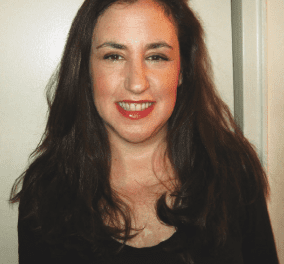The American Academy of Facial Plastic and Reconstructive Surgery (AAFPRS), the world’s largest association of facial plastic surgeons, annual survey shows that, like it or not, the selfie and its impact on aesthetics is here to stay, and continues to have a huge effect on how we perceive and project ourselves – in front of the camera and off.
The annual survey explores the top trends in facial plastic surgery and compares year-over-year results.
Selfie Awareness is Here to Stay
For better or worse, “selfie-awareness” is more than a fad. In 2017, 55% of facial plastic surgeons saw patients who want to look better in selfies in their practices (up 13% from 2016). First identified by AAFPRS members more than 3 years ago in the annual survey, the trend continues to gain steam and transform the facial plastic surgery industry.
“For a few years, AAFPRS members have been at the forefront of this trend,” says AAFPRS President William H. Truswell, MD. “More and more of our patients are using social media as a forum to gain a sense of solidarity when under-going a major, potentially life-changing procedure. Consumers are only a swipe away from finding love and a new look, and this movement is only going to get stronger.”
And it’s not just enhanced selfies that are trending. From public healing diaries to A-list and Insta-celebs baring all on their social media accounts, nothing is off limits when it comes to sharing one’s enhancements and aesthetic edits. From lip injections to chin implants to ear lobe reduction, 2017 showed us that there is no shame in sharing your road to self-confidence!
Empowered is the New Ageless
While surgery is no longer a hush-hush topic, 2017 made the phrases “anti-aging” and ”you look good for your age” taboo. The tables are turning on what it means to look and feel great, with a focus on health, vitality, and empowerment rather than a number.
This “pre-juvenation” shift defies being defined by one’s age and is breeding a generation of uber-educated consumers who are taking control of the aging process.
“This emerging segment is knowledgeable about high-tech skincare and sun prevention and starts with facial injectables before they turn thirty,” says Truswell. “As more Millennials come of age and gain disposable income for aesthetic treatments, our members have seen steady growth in the demand for cosmetic procedures.”
In fact, the average number of procedures performed by AAFPRS members has increased 25% since 2012. More than half (56%) of AAFPRS members saw an increase in cosmetic surgery or injectables with patients under age 30 last year, and over four-fifths of treatments in 2017 were cosmetic non-surgical procedures.
No matter the treatment, a natural-looking outcome is paramount for patients, with 33% stating a fear of looking unnatural as their top concern.
Plastic Surgery for a Promotion
A full 57% of facial plastic surgeons reported patients’ desire to stay relevant and competitive at work as a major driver in the decision to have a cosmetic treatment. Advancements in non-invasive and combination technologies are allowing men and women to refresh their appearance with little to no downtime taking them away from the office.
Some of the most requested procedures were tailored to these specific lifestyle concerns. Eyelid procedures to look less tired were reported as a rising trend by 73% of members along with combined non-surgical procedures by 72% of members.
“By combining non-surgical choices such as novel lasers, hybrid lasers and microneedling systems, we are able to treat a wide range of facial rejuvenation concerns in the span of one appointment,” says Truswell. “These procedures all boast very little downtime, meaning patients with demanding careers can be back in the office without skipping a beat.”
The Bigger Picture
Predictably, BOTOX® (Allergan), along with Dysport® (Galderma) and Xeomin® (Merz), remain the most popular minimally invasive procedures for both women and men, followed by fillers and skin treatments.
For surgical trends, rhinoplasty leads the way year after year (performed by 97% of surgeons in 2017) followed by blepharoplasty (95%) and facelifts (88%). The most popular procedure overall, Botox was ranked first for women followed by rhinoplasty. However, for men it was reversed with rhinoplasty as the top procedure followed by Botox.
Botox and hair transplants both notably increased in the past 5 years, with the number of Botox procedures in the survey increasing by 33% from 2012 to 2017. The number of hair transplants in the sample jumped by more than 538% in that time span. Non-invasive fat reduction and Platelet-rich plasma (PRP) injections are newer procedures that facial plastic surgeons are also seeing requested more often.
“PRP is the next frontier, and facial plastic surgeons are eager for more data to illustrate what it can do for skin rejuvenation and how it can be used in combination with lasers, energy based devices, and microneedling and even hair restoration.” says Truswell.
Trust Your Face to a Facial Plastic Surgeon
Finding a practitioner they can trust was the primary concern for patients considering cosmetic surgery in 2017. With more medical spas and centers popping up, one in four AAFPRS members expressed concern about an increase in non-medical staff doing procedures resulting in poor results. To prevent this, the AAFPRS urges consumers to select a board-certified surgeon who specializes in plastic surgery of the face, head, and neck.
Truswell observes, “A board-certified facial plastic surgeon is in the best position to help patients evaluate all of the potential treatment options—both surgical and non-surgical—given the unique needs, interests, and goals of each patient, and then deliver such treatment with the highest clinical quality and success.”
Research providers and treatment information via trusted online sources, review before/after images and don’t be afraid to ask tough questions about background and credentials.
[Source: Kelz PR]




